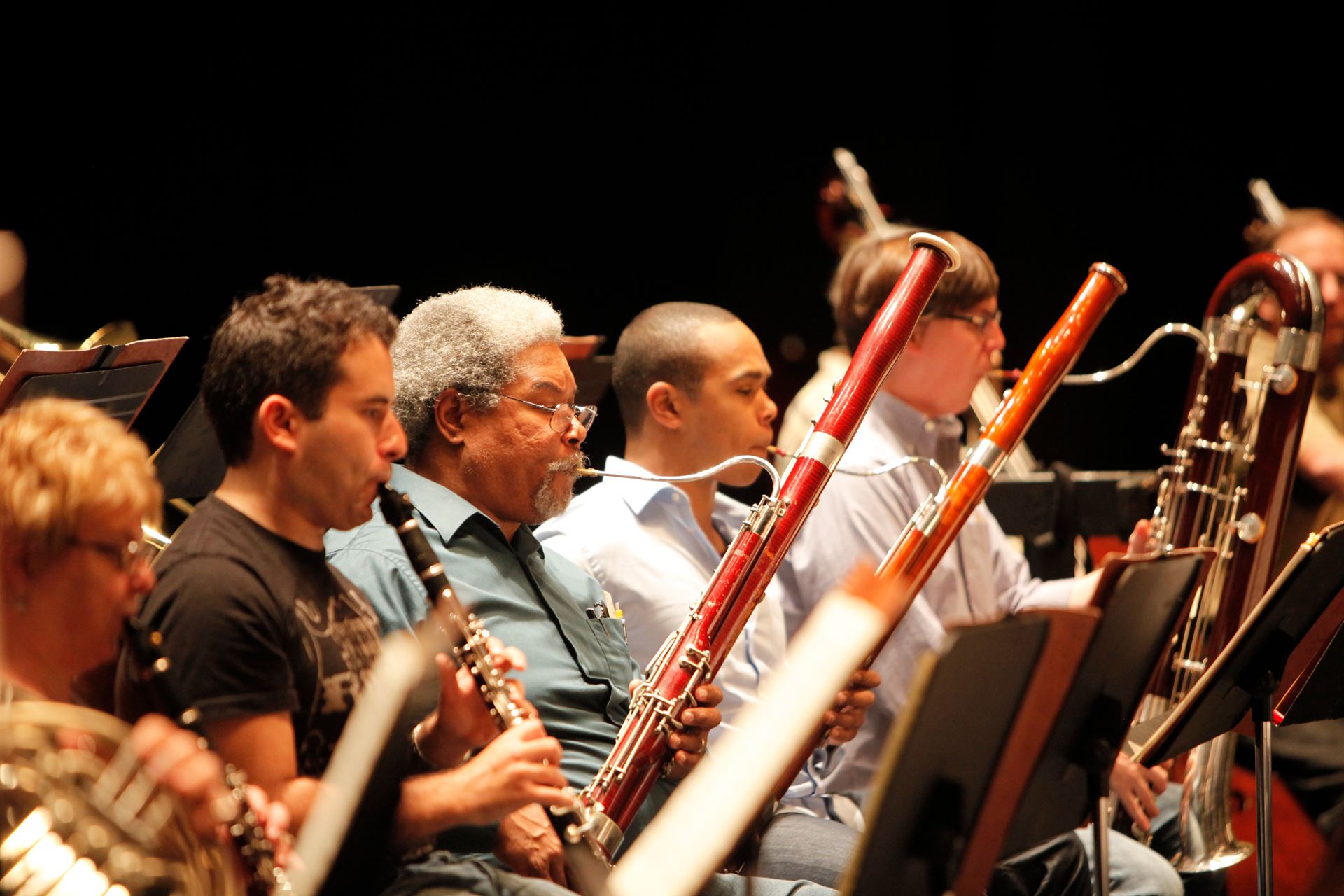
People at the Opera
Onstage
Baritone: The male singing voice between bass and tenor, with a range that extends from the second G below middle C to the first G above middle C. Examples include the title roles of Don Giovanni and Rigoletto, and Zurga in Les pêcheurs de perles.
Bass: The lowest male singing voice, similar to a trombone or a bassoon in tone color and range (the second E below middle C to the first E above middle C); most comfortable with notes contained within the outermost lines of the bass clef. In serious or dramatic opera, low voices usually suggest age and wisdom; in comic opera, they are generally used for old characters. Examples include King Marke in Tristan und Isolde, Bartolo in Il barbiere di Siviglia and The Grand Inquisitor in Don Carlo.
Contralto: The lowest female singing voice, sometimes called simply "alto," often used for an older female character who possesses great wisdom. A true contralto is a very rare voice type and has a quality of tone similar to the lower range of a clarinet, with a range extending from the F below middle C to the second G above middle C. Examples include Filippevna in Eugene Onegin, Ulrica in Un ballo in Maschera and Erda in Das Rheingold.
Countertenor: The countertenor is a natural tenor (or sometimes baritone) with an elevated range. With training and practice this higher range, similar to that of a woman’s alto, becomes the natural voice. Roles often sung by countertenors include the title role of Guilio Cesare, Bertarido in Rodelinda and Nero in L'incoronazione di Poppea. Roles written in the 20th century for countertenor include Oberon in A Midsummer Night's Dream and Apollo in Death in Venice.
Diva: Literally "goddess," it refers to an important female opera star. The masculine form is divo.
Mezzo-Soprano: The middle female singing voice, similar to an oboe in range; opera composers often use the mezzo-soprano voice to portray a mother or caretaker, a villainess or a seductive heroine. Mezzo-sopranos with lighter qualities of voice are also used to portray a preadolescent male character in what is known as a "pants role" or "trouser role." Examples include Meg in Little Women, Cherubino in Le nozze di Figaro and the title role of Carmen.
Soprano: The highest female singing voice, with a range extending from middle C to the C two octaves above it. Examples include the title role of Manon, Marguerite in Faust and Violetta in La Traviata.
Supernumerary: Someone who is part of a group on stage but doesn't sing. It is usually shortened to Super. Typical supernumerary roles include townspersons, soldiers or members of a crowd.
Tenor: The highest common adult male singing voice (not including countertenor), with a range from once octave below middle C to the A immediately above middle C; in opera, a tenor is usually the hero and/or romantic interest. Examples include the title role of Werther, Manrico in Il trovatore and Tom in The Rake's Progress.
In the Pit
Concertmaster: The first-chair violinist who plays occasional solos and is responsible for coordinating all of the stringed instruments. The concertmaster decides on the bowing so that all of the string players’ bows move in unison.
Conductor: The leader of the orchestra, sometimes called Maestro. This person leads all the musicians (instrumentalists and vocalists) in the performance of an opera; an accomplished musician with a strong sense of rhythm and an in-depth understanding of the voice and each orchestral instrument, he or she must also be able to communicate nuances of phrasing and inspire great performances from all players.
Orchestra: The group of instrumentalists or musicians who, led by the conductor, accompany the singers.
Behind the Scenes
Costume Designer: Works with the set designer to prepare costumes that are appropriate for the rest of the production. Often oversees the preparation of the costumes.
Dramaturg: One who suggests repertory, advises on the suitability of competing editions of operas and writes or edits material for program books and supertitles.
General Director: The head of an opera company. The one ultimately responsible for all artistic and financial aspects of everything in which the company is involved. Matthew Shilvock is San Francisco Opera’s general director.
Lighting Designer: One who designs and coordinates the light changes that help create opera’s overall effect. Much of this is now computerized.
Music Director: Conductor Eun Sun Kim is San Francisco Opera’s music director. She is responsible for the Company’s musical values and is a key member of the artistic team determining programming and casting.
Prompter: A prompter gives singers the opening words of each of their phrases, a fraction of a second early, sometimes with hand gestures as cues. Working from a prompter’s box at the front of the stage and visible only to performers, their prompts are mouthed silently or said in a half-voice audible only on stage.
Property Master: One who is responsible for purchasing, acquiring and/or manufacturing any props needed for a production.
Set Designer: The person who designs the background and furnishings on the stage.
Stage Director: The one responsible for deciding the interpretation of each character, the movements of the singers on stage, and other things affecting the singers. Is in charge at rehearsals.
Stage Manager: The person in charge of the technical aspects of the entire opera, including light changes, sound effects, entrances (even of the conductor) and everything else that happens.

